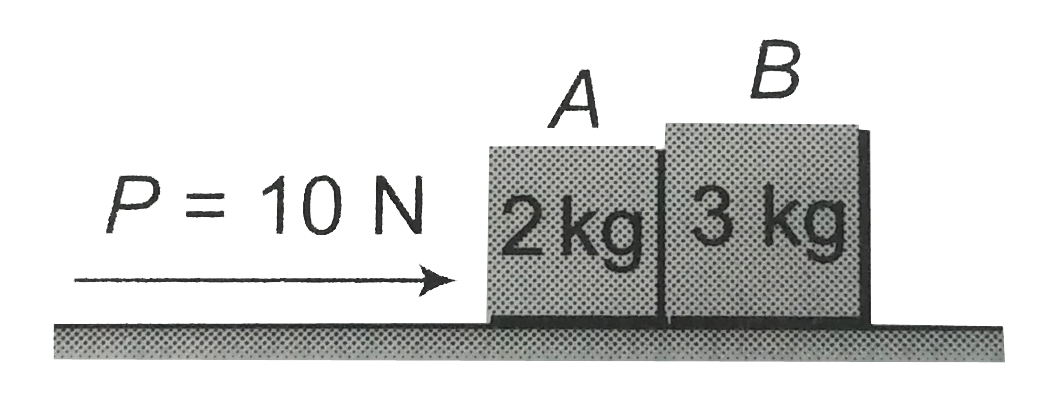A and B are two objects with mass 6 kg and 34 kg respectively. Then
A has more inertia than B
B has more inertia than A
A and B both have same inertia
None of the above is true
The correct Answer is:B
To solve the problem regarding the inertia of two objects A and B with masses 6 kg and 34 kg respectively, we will follow these steps:
1. Understand the Concept of Inertia:
Inertia is the property of an object to resist changes in its state of motion. It is directly related to the mass of the object; the greater the mass, the greater the inertia.
2. Identify the Masses:
- Mass of object A (m_A) = 6 kg
- Mass of object B (m_B) = 34 kg
3. Compare the Masses:
To determine which object has more inertia, we compare their masses:
- Since 34 kg (mass of B) is greater than 6 kg (mass of A), we can conclude that B has more inertia than A.
4. Conclusion:
Based on the comparison of masses, we can state that:
- Inertia of A < Inertia of B
- Therefore, the correct option is that B has more inertia than A.
Final Answer:
The correct option is Option 2: B has more inertia than A.
---
Inertia is the property of an object to resist changes in its state of motion. It is directly related to the mass of the object; the greater the mass, the greater the inertia.
- Mass of object A (m_A) = 6 kg
- Mass of object B (m_B) = 34 kg
To determine which object has more inertia, we compare their masses:
- Since 34 kg (mass of B) is greater than 6 kg (mass of A), we can conclude that B has more inertia than A.
Based on the comparison of masses, we can state that:
- Inertia of A < Inertia of B
- Therefore, the correct option is that B has more inertia than A.
The correct option is Option 2: B has more inertia than A.
Topper's Solved these Questions
- LAWS OF MOTION, FRICTION AND ARCHIMEDES' PRINCIPLEBOOK - MCGROW HILL PUBLICATIONCHAPTER - LAWS OF MOTION, FRICTION AND ARCHIMEDES' PRINCIPLEEXERCISE - HIGHER ORDER THINKING QUESTIONS
34 Videos
- HEATING AND MAGNETIC EFFECTS OF CURRENT BOOK - MCGROW HILL PUBLICATIONCHAPTER - HEATING AND MAGNETIC EFFECTS OF CURRENT EXERCISE - HIGHER ORDER THINKING QUESTIONS
34 Videos
- MEASUREMENTBOOK - MCGROW HILL PUBLICATIONCHAPTER - MEASUREMENTEXERCISE - ELEMENTARY QUESTIONS (HIGHER ORDER THINKING QUESTIONS)
13 Videos
Similar Questions
Calculate the force of gravitation between two objects of masses 50 kg and 120 kg respectively kept at a distance of 10 m from one another.(Gravitational constant G=6.7×10−11Nm2/kg2)
View SolutionIn the above example, if two blocks have masses 1kg and 2kg respectively then find their acceleration and tension in different string.
View Solution
Knowledge Check
A and B are two objects with masses 10 kg and 40 kg respectively. Then
AA has more inertia than BBB has more inertia than ACA and B have the same inertiaDNeither A nor B has any inertiaP and Q are two objects with masses 5 kg and 30 kg respectively. Then
AP has more inertia than QBQ has move inertia than pCP and Q have the same inertiaDneighter P nor Q has any inertiaA shell of mass 10 kg is moving with a velocity with a velocity of 10ms−1 when it blasts and forms two parts of mass 9 kg and 1 kg respectively. If the 1st mass is stationary, the velocity of the 2nd is
A1ms−1B10ms−1C100ms−1D1000ms−1
Two bodies A and B having masses 2 kg and 4 kg respectively are separated by 2 m. Where should a body of mass 1 kg be placed so that the gravitational force on this body due to bodies A and B is zero?
View SolutionTwo solids A and B of mass 1 kg and 2 kg respectively are moving with equal linear momentum. The ratio of their kinetic energies (K.E.)A:(K.E.)B will be A1 , so the value of A will be _____ .
View SolutionTwo particles A and B of mass 1 kg and 4 kg respectively approach each other due to their mutual gravitational force only. Then the ratio of acceleration of A to B at any instant is
View SolutionBlocks A and B have masses of 2 kg and 3 kg. respectively. The ground is smooth. P is an external force of 10 N. The force exerted by B on A is

View SolutionTwo substances have masses 90 kg and 160 kg respectively. They possess equal kinetic energy. The ratio of their momenta will be
View Solution
